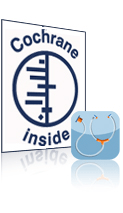
Skyscape announced today that they will be offering the coveted Cochrane list for Palm and other devices.
The Cohrane reviews are essentially the Gold Standard in medicine following the introduction of evidence based medicine. In short, this mantra, which is just loved by insurance companies, allows health providers to justify their treatment options. Critics argue that the "art" of medicine is lost with all of this evidence based criteria since most of the decisions fall on a bell curve. If you happen to be one of those patients who do not conform to the treatment options seen by the 95% of the population then there's a problem.
But with personal thoughts aside, the reviews are now available for (probably) physicians to go through at the point of care, which as discussed below, is the most fitting way to do things.
However, having not tried the program I am already seeing several issues:
1. First the price point. $29.95 for each set. Sets can include 3 for anesthesia, 4 for psychiatry, 12 for infectious disease and 7 for neurology. $30 per set seems somewhat steep, given the fact that much of the Cochrane review can be viewed via the computer for much much less than this.
2. Past experiences with Skyscape. Now I will have to be careful how I put this, not wanting to set up the you-know-who's who cannot wait to get their hands on a class action, but Skyscape has had some issues in the Palm Community with software that tended to take over your Palm device, leave stray files upon deletion and have a series of crashes. Additionally, their customer service has not been the best. There is no information about how their software runs on Lifedrives.
If I were in charge of the Cochrane series, I would have chosen iSilo to conduct the search. Most of us in the medical profession can attest that this is really the gold standard for non-standalone documents. They have really done a lot for the medical profession when it comes to standardizing output and making navigation a breeze. If you ever get the opportunity, take a look at DermMeister, a brilliant Dermatology document that is easy to navigate.
Additionally, iSilo and its accompanying documents can run from the SD card. So you don't have to use space on your Palm device.
However, I am willing to let past experiences reside and see -- given the pricing, which I think is somewhat unreasonable -- how well this does. I will also look to see if there are any comments, both good and bad from colleagues who use it.
LDD.







